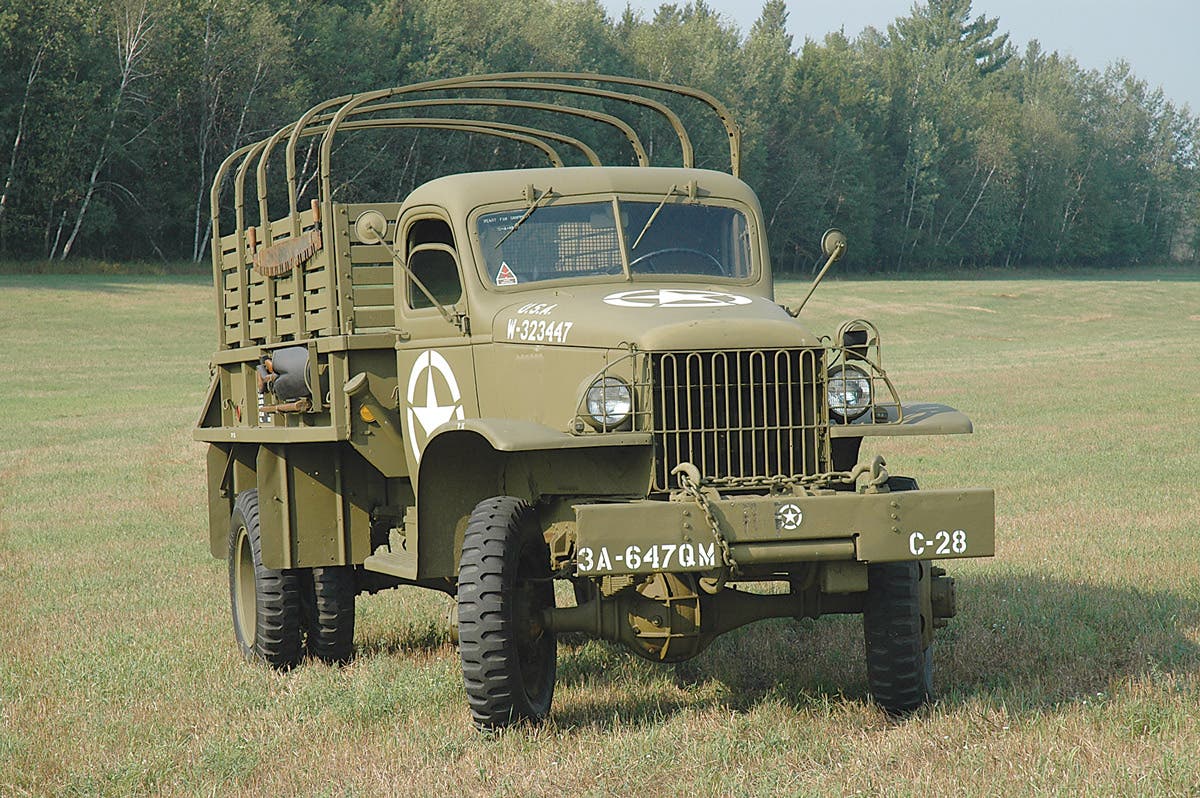Historic Military Vehicle Spotlight: WW2 Ford GPW and Willys MB 1/4-ton Jeeps
All Jeeps are not the same! This guide will help you sort out your WW2 MBs from your GPWs and to know the current value.
With the Jeep’s design having been standardized as that of the Willys MB, a second source of supply was sought. Ford was licensed to build copies of the Willys design, to which Ford assigned its model designation GPW. Again, G meant government contract vehicle, P indicated it was an 80-inch wheelbase reconnaissance car and the W suffix referred to the Willys motor
The first 25,808 MBs had what is now known as a “slat grille.” This was a welded assembly of heavy bar stock. Vehicles produced after June 1942 used the now familiar lightweight stamped-steel grille, which is now the registered trademark of Jeep. Ironically, this grille had originally been developed by Ford for the GPW. The stamped grille was not only lighter, but also reportedly could be produced for about one third the cost of the fabricated unit it replaced. The early models had “Willys” embossed in the rear body panel and are known as “script” Jeeps. Add 20% to the value for script and /or slat grille jeeps.
Like the MB, Ford’s earliest models had the maker’s name embossed in script on the rear panel. The grille was of fabricated steel construction until Jan. 6, 1942. Then Ford introduced the stamped steel grille, which was later ironically registered as a trademark for Chrysler’s Jeep.
Ford built its own bodies at the Lincoln plant until the fall of 1943. Then Ford began buying bodies from American Central, which was already supplying bodies to Willys. After only a short time, representatives of Ford, Willys and the Ordnance Department met and created the composite body, which incorporated the best features of each maker’s body. This body is what is now known as the composite body, and it was used by both Ford and Willys from January 1944 onward, although a few were used during the last months of 1943.
Throughout the production of the 277,896 GPWs, Ford marked many of the components with the Ford “F” logo. Among these components were pintle hooks, fenders, bolts, etc. However, due to materials shortages, non-F parts were sometimes substituted on the assembly line.
The script Ford name on the rear panel was discontinued in July 1942. Add 20% to the value for script jeeps.
Ford built the GPW at six plants: Louisville, Ky., Dallas, Texas, Edgewater, N.J., Richmond, Calif., Chester, Pa., and Ford’s huge Rouge complex in Dearborn , Mich.
As a rule, the most readily spotted difference between the MB and the GPW involves the front cross member. This is a tubular member on Willys vehicles, and an inverted U-channel on the Ford. Early GPWs used the Midland Steel-produced frame with the tubular crossmember, as well.
Specifications
Weight: 2,450 pounds
Size (LxWxH): 132” x 62” x 72”
Max Speed: 55 mph
Range: 285 miles
Price Guide, MB / GPW
WHAT DO THE NUMBERS MEAN?
Buy the best you can afford. Restoring a vehicle will always be more expensive than buying a finished project.
The vehicles in this guide are given a value based on a 1-to-6 condition grading scale:
1=Excellent: Restored to maximum professional standards, or a near-perfect original.
2=Fine: Well-restored, or a combination of superior restoration and excellent original parts.
3=Very Good: Complete and operable original or older restoration, or a very good amateur restoration with all presentable and serviceable parts inside and out.
4=Good: Functional or needing only minor work to be functional. Also, a deteriorated restoration or poor amateur restoration.
5=Restorable: Needs complete restoration of body, chassis, and interior. May or may not be running, but is not wrecked, weathered or stripped to the point of being useful only for parts.
6=Parts Vehicle: Deteriorated beyond the point of restoration.
You may also enjoy
*As an Amazon Associate, Military Trader / Military Vehicles earns from qualifying purchases.
From the staff of North America's no. 1 historic military vehicle source -- Military Vehicles Magazine








